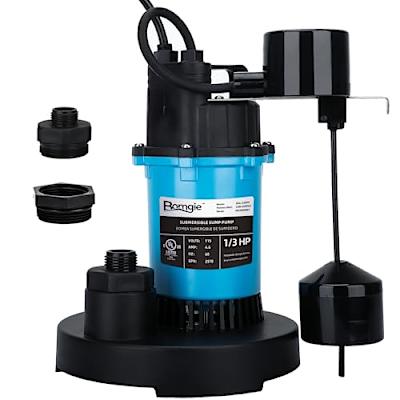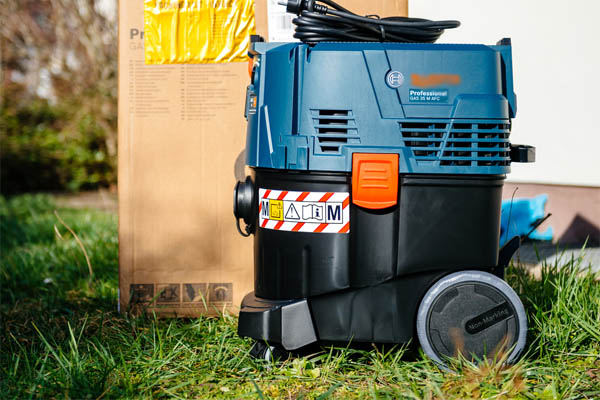Effortless Methods to Service a Sump Pump
Effortless Methods to Service a Sump Pump
Blog Article
How do you actually feel in regards to How to Care for Your Sump Pump?

Sump pumps are critical elements in numerous homes, especially in locations susceptible to flooding or too much moisture. They help avoid water damage by successfully eliminating excess water from basements or crawl spaces. However, like any other device, sump pumps require normal upkeep to guarantee they function efficiently when required the most. Cleansing your sump pump is an important part of its maintenance, and recognizing just how to do it appropriately can save you from expensive fixings and possible calamities.
Introduction
Keeping a clean sump pump is important for its appropriate functioning and durability. Neglecting this vital task can result in blockages, malfunctions, and inevitably, water damage to your residential or commercial property. As a result, learning exactly how to cleanse a sump pump is critical for home owners that depend on these gadgets to maintain their basements completely dry and protected.
Indicators of a Dirty Sump Pump
Understanding when your sump pump requires cleaning is vital for stopping possible breakdowns. Some common signs that indicate an unclean sump pump consist of unusual sounds throughout procedure, reduced water flow, and visible debris in the pit. If you observe any of these signs and symptoms, it's essential to clean your sump pump without delay to prevent any more problems.
Planning for Cleaning
Before you start cleansing your sump pump, it's vital to take some security precautions. Beginning by shutting down the power to the pump to stay clear of any type of electrical accidents. In addition, wear ideal protective equipment, such as gloves and goggles, to protect yourself from dirt, debris, and prospective virus.
Understanding the Sump Pump
Before diving into the cleaning procedure, it's important to have a standard understanding of exactly how a sump pump works. Generally set up in a pit or basin below the basement floor, a sump pump contains a number of key elements, including a pump, a float switch, and a discharge pipeline. When water builds up in the pit, the float switch turns on the pump, which after that pumps the water out via the discharge pipe, away from the building's structure.
Step-by-step Guide to Cleaning Up a Sump Pump
Shutting down the Power
Begin by separating the power supply to the sump pump to prevent any type of mishaps while cleaning.
Looking For Proper Performance
Prior to reinstalling the pump, execute a quick examination to ensure that the float switch turns on the pump appropriately. Put some water into the sump pit and observe the pump's operation. If everything is working properly, you can reassemble the pump and reconnect the power supply.
Getting Rid Of Debris and Dust
Make use of a pail or an inside story to eliminate any type of visible debris, dust, or debris from the sump pit. Dispose of the particles correctly to avoid it from blocking the pump or the discharge pipe.
Cleaning the Pump and Drift Change
Once the pit is clear of particles, carefully eliminate the pump from the pit. Check the pump and the float button for any signs of damages or wear. Make use of a soft brush or fabric to cleanse the surfaces and eliminate any type of accumulated crud.
Purging the System
After cleansing the pump and float button, flush the sump pit with tidy water to get rid of any continuing to be dust or sediment. This will certainly assist ensure that the pump runs efficiently and efficiently.
Upkeep Tips to Maintain Your Sump Pump Clean
Along with regular cleaning, there are several maintenance tips you can comply with to maintain your sump pump in ideal problem:
Conclusion
Cleaning your sump pump is a crucial aspect of its maintenance and guarantees that it operates efficiently when you require it one of the most. By adhering to the steps detailed in this guide and including normal maintenance right into your routine, you can expand the life expectancy of your sump pump and secure your home from water damages.
6 STEPS ON HOW TO CLEAN A SUMP PUMP PROPERLY
UNDERSTANDING SUMP PUMPS
Your sump pump plays a crucial role in protecting your home by managing and removing excess water. It primarily functions as a “shield”, guarding your basement against the damaging effects of water accumulation. The pump is housed in a sump pit in the lowest part of your basement, and its job is to pump out any water that collects there.
During heavy rainfalls or when snow melts rapidly, water can infiltrate your basement, posing potential risks like flooding, structural damage, and harmful mold growth. Here, the sump pump springs into action, pumping out the intruding water and directing it away from your home.
SAFETY FIRST
Before cleaning, remember to prioritize safety. Disconnect the sump pump from the power source to prevent any accidental electric shocks. Also, wear sturdy gloves to protect your hands from any sharp or dirty components within the pump.
REMOVE THE SUMP PUMP
After ensuring your safety, the next step is to remove the sump pump from its pit. Doing this might require careful maneuvering as you don’t want to damage any pump components. Once removed, clean the sump pit to remove any accumulated debris or sludge.
INSPECT THE PUMP
Inspect the pump for any visible signs of wear or damage. Check the power cord, float switch, and impeller housing. If any components look worn out or damaged, consider replacing them to ensure optimal performance.
CLEAN THE PUMP
Thoroughly clean the pump with warm, soapy water. Make sure to rid it of any dirt, gravel, or other debris that might impede its performance. You can use a toothbrush to clean the small, hard-to-reach parts of the pump.
REINSTALL THE SUMP PUMP
Reinstall the pump into the sump pit Make sure it’s positioned correctly to remove the water effectively Once it’s back in place, reconnect it to the power source TEST THE PUMP
Finally, pour some water into the pit to ensure the pump works correctly. It should start automatically and begin pumping out the water; if it doesn’t, check the power source and the positioning of the pump.
Remember, while cleaning your sump pump is an essential part of home maintenance, hiring a professional plumber for a thorough inspection and cleaning at least once a year is also important. This will ensure that your pump is in optimal condition, ready to protect your home from potential water damage.
BEST PRACTICES FOR CLEANING SUMP PUMP DISCHARGE PIPES
Regular Inspection: Regularly inspect your discharge pipes, especially during heavy rainfall or snowmelt periods. Look for any signs of blockage or damage. Early detection of problems can prevent serious issues down the line. Periodic Cleaning: Over time, sediment and debris can accumulate in the discharge pipes, impeding the flow of water. Regular cleaning helps keep the pipes clear and functioning efficiently. You can use a high-pressure water jet to effectively clean the pipes. Insulation During Winter: In colder climates, discharge pipes can freeze, blocking the outflow of water. Protect your discharge pipes from freezing temperatures by insulating them with foam pipe insulation. This will ensure the sump pump can continue to discharge water even in freezing conditions. Proper Positioning: The discharge pipe should be positioned to direct water away from your home’s foundation. Improper positioning can lead to water seeping back into the basement. Ensure the pipe is long enough and angled correctly. Installation of a Check Valve: A check valve prevents water from flowing back into your sump pit after the pump has pushed it out. Installing a check valve helps maintain the efficiency of your sump pump and reduces the risk of flooding. Minimize Pipe Turns: Every curve or turn in the discharge pipe can decrease the efficiency of water flow. By minimizing turns and bends in your discharge pipe, you can increase the efficiency of your sump pump. https://www.fullspeedplumbing.com/how-to-clean-a-sump-pump-properly9999/

As a keen person who reads on How to Care for Your Sump Pump, I think sharing that piece of content was worthwhile. Loved our posting? Please quickly share it. Let others discover it. Thank-you for taking the time to read it.
Click Here Report this page